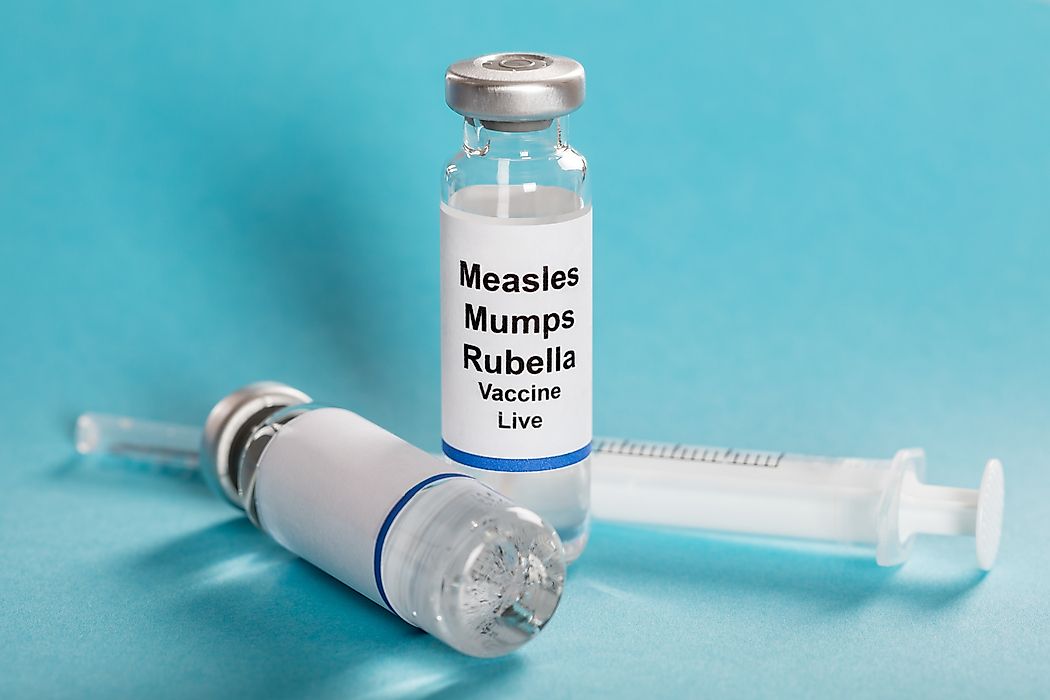Measle Vaccination Rates By Country

Universal health problems are unquestionably more prevalent in less developed nations, due to a lack of the funds necessary to provide better healthcare within them. This greatly hampers efforts by both the government and non-governmental organizations alike in mitigating challenges that arise from poor health, such as measles outbreaks. Most low income economies do not have the funds to provide easily accessible healthcare services to their citizens. Sometimes, they are also faced with problems of poor governance, and with it the inability to put basic infrastructural components into place.
Nations with Low Levels of Measles Immunization for Young Children
Countries with the lowest immunization rates of measles among children between the ages of 12 and 23 months are faced with a variety of internal and foreign relations problems alike that can cause such unpleasant statistical outcomes. Many of these countries are located in troubled regions of the African continent. In South Sudan, less than 1 in 4 children between 12 and 23 months old receive measles immunizations, and less than half of similarly aged children receive measles immunizations in Equatorial Guinea, Somalia, and the Central African Republic. Lack of infrastructure, internal conflict, and poor foreign relations take their toll on the welfare of their respective citizenries from the earliest ages in life.
There are also countries that have not had measles outbreaks in a long time, and have grown complacent in their drive to immunize their children. This trend is accentuated by a shrinking percentage of the number of children immunized against measles every year in these countries. As such developments continue, these nations risk suffering serious outbreaks that could pose a very major health challenge, especially if they don't have the means to contain a measles epidemic already in place. Measles is a deadly disease that can cause fatalities on a mass-scale, especially among infants, and therefore outbreaks should be avoided at all costs.
Factors Decreasing Immunization Capacities
Most countries faced by constant acts of terrorism have a poor healthcare system. The constant wars and high levels of insecurity makes it very difficult for the governments of these countries to focus on healthcare, because threats from terrorism are considered graver than threats from measles outbreaks. Countries like Iraq and Syria are faced by regular acts of terrorism, and this makes both the country’s economy and health system unstable. There are also countries experiencing civil wars, such as South Sudan, which hamper economic development activities as most of their people are too afraid to settle down in one place and focus on building infrastructure. One common result is a poor healthcare system, as a lack of political goodwill and unavailability of funds make it difficult to lay down such basic societal components as hospitals and clinics. The journey towards the complete elimination of measles largely hinges on well-crafted government policies being in place, which go a long way in reducing the number of new infections and containing prospective outbreaks if they are specifically and enthusiastically purposed for such. Mismanagement of public funds due to rampant corruption also plays a role in the low number of immunized children, because money meant for healthcare is diverted to individuals' pockets. Some countries in Africa are greatly affected by corruption, and thus have very low number of children immunized against measles.
Focusing Efforts on Immunization Access for All Children
Developing nations must find a way to prioritize healthcare in order to eliminate some of the communicable diseases like measles. As the world strives to be free of some of these deadly diseases, countries that lag behind in the relative number of immunized children often face their own unique stumbling blocks that prevent them from achieving important immunization and other healthcare objectives. In the end, it will require a unified approach from every country to eradicate measles completely from the globe, which can only happen when societies without the necessary means in place must be brought up to the level of those exhibiting healthcare success.
Measle Vacation Rates By Country
| Rank | Country | Measles Vaccination Rate (% of Population between 12-23 Months Old) |
|---|---|---|
| 1 | South Sudan | 22.00 % |
| 2 | Equatorial Guinea | 44.00 % |
| 3 | Somalia | 46.00 % |
| 4 | Central African Republic | 49.00 % |
| 5 | Nigeria | 51.00 % |
| 6 | Guinea | 52.00 % |
| 7 | Haiti | 53.00 % |
| 8 | Vanuatu | 53.00 % |
| 9 | Syria | 54.00 % |
| 10 | Chad | 54.00 % |
| 11 | Iraq | 57.00 % |
| 12 | San Marino | 57.00 % |
| 13 | Liberia | 58.00 % |
| 14 | Gabon | 61.00 % |
| 15 | Benin | 63.00 % |
| 16 | Cote d'Ivoire | 63.00 % |
| 17 | Pakistan | 63.00 % |
| 18 | Madagascar | 64.00 % |
| 19 | Papua New Guinea | 65.00 % |
| 20 | Afghanistan | 66.00 % |
| 21 | Guatemala | 67.00 % |
| 22 | Tonga | 67.00 % |
| 23 | Guinea-Bissau | 69.00 % |
| 24 | Ethiopia | 70.00 % |
| 25 | South Africa | 70.00 % |











